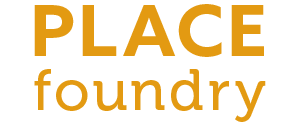Ecosystem components
Becoming a student of ecosystem mapping changed my operating paradigm. I’m still recovering from the “waterfall” method of urban planning that I picked up along the way. The idea that you can mastermind places, assign random target dates to achieve goals, and assume everyone gets onboard is still widely used in our field.
But, there’s hope. Like other professions, we are coming to terms with the idea that strategic planning isn’t what we think it is.
It’s creating new ways for us to think and practice the art and science of place development.
What I appreciate the most about ecosystem mapping is it begins with value and values. When we see people, land, and marketplaces as value-rich, we begin to produce magnetic destinations. And, the results lead to better learning environments, meaningful productivity, commercial activity, diverse housing options, and healthy lifestyles.
There are two components of ecosystem mapping:
Ecosystem-level building blocks, and
Actor-level building blocks.
Ecosystem-level building blocks allow you to define your value proposition (the promised value you will deliver). Actor-level building blocks enable everyone to recognize the value they bring and align activities (doing) to provide the promised value.
A defined value proposition leverages the characteristics, attributes, and skills that you already have in place. It then leads to questions like “what could our community become with the assets we have?” And from there, you go on a journey of building a healthy ecosystem that cultivates and accelerates thriving people, land, and a marketplace of opportunities.
